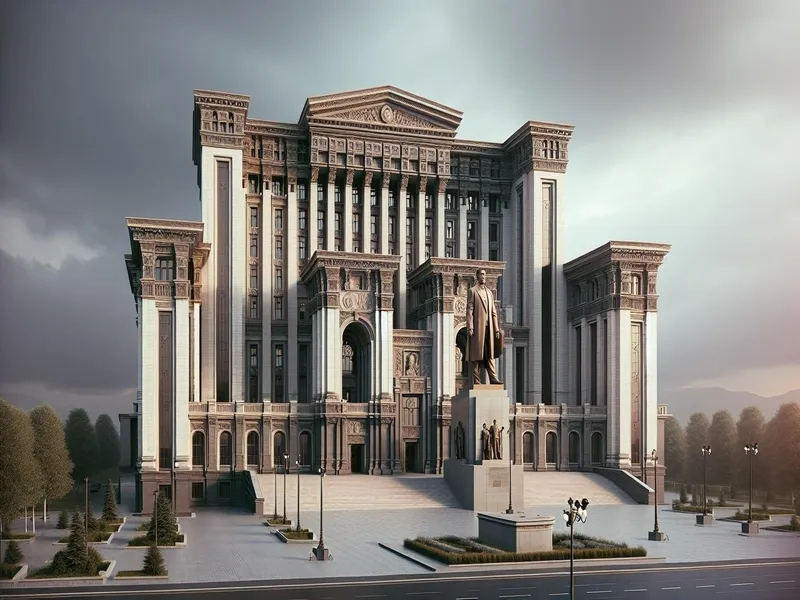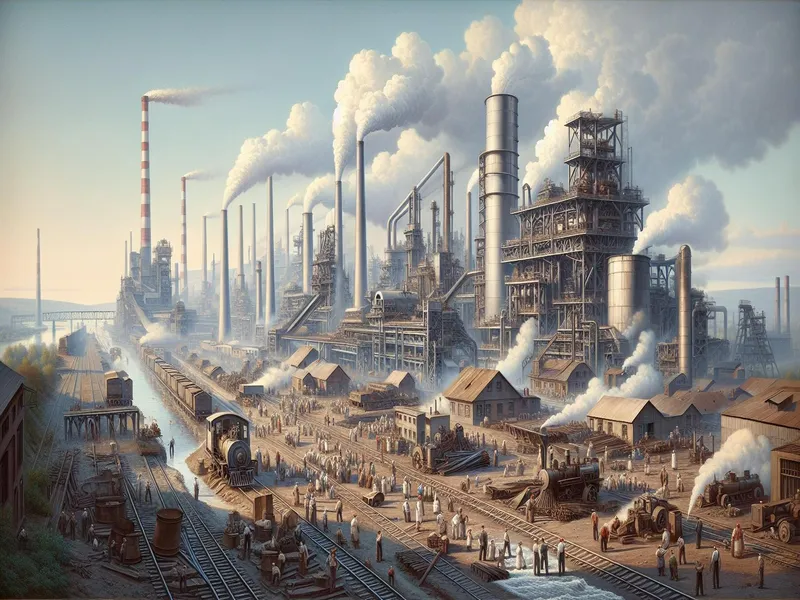Explore Transnistria, an unrecognized Soviet-style republic in Eastern Europe. Tiraspol’s nostalgic charm and unique travel experience off the beaten path.

Historical Background
Alright, let’s jump into the past of Transnistria. This isn’t just any old history lesson; it’s like peeling back layers of a truly unique story.
The Soviet Era Influence
You know how some places just cling to their glory days? Well, Transnistria is kind of like that nostalgic friend who can’t stop talking about high school. Back in the day, this region was part of the Soviet Union, and boy, does it show! Everywhere you look in Tiraspol, you’ll see statues of Lenin and those classic hammer-and-sickle emblems. It’s almost like stepping into a time capsule from the 1980s.
Declaration of Independence
Fast forward to 1990: while most folks were rocking out to grunge music and watching “Friends,” Transnistria had other plans. They decided to declare independence from Moldova. Imagine trying to throw your own party when no one else even acknowledges it! That’s pretty much what happened here—they set up their own government but never got recognized by any major country.
A Clash with Moldova
Things didn’t stay peaceful for long after that declaration. In 1992, tensions boiled over into a brief but intense conflict with Moldova. Picture this: two neighbors arguing so loudly that everyone on the block gets involved. Thankfully, a ceasefire was brokered by Russia (the mediator neighbor) later that year, but things have been icy ever since.
The Russian Connection
Speaking of Russia… they’re kind of like an older sibling in this scenario—always hanging around and offering support when needed. Even though not officially recognizing Transnistria as an independent state either, Russia provides economic aid and has peacekeeping troops stationed there.
Here’s a quick comparison table:
| Aspect | Moldova | Transnistria |
|---|---|---|
| International Status | Recognized globally | Not recognized |
| Main Language | Romanian | Russian |
| Currency | Moldovan Leu | Transnistrian Ruble |
| Military Support | Limited | Supported by Russian troops |
Cultural Time Warp
Walking through Tiraspol feels like you’ve jumped back several decades ️. Think vintage cars cruising down wide boulevards named after Soviet heroes or streets lined with old-school propaganda posters —it’s surreal!
If you’re planning on backpacking through Eastern Europe and fancy a trip off the beaten path ️, consider visiting Transnistria for its unique charm! But remember: pack light and stay flexible because things work differently there .
Political Structure

Transnistria’s political structure is pretty unique, and it reflects its Soviet roots. If you’re into history, you’ll find this blend of past and present fascinating.
Government Formation
The government in Transnistria, officially known as the Pridnestrovian Moldavian Republic (PMR), mimics old Soviet models but with a twist for modern times. It has an executive branch led by a president, a legislative branch called the Supreme Council, and a judicial branch.
- President: The head honcho who runs the show.
- Supreme Council: This 43-member body makes laws and policies.
- Judiciary: Ensures everything stays legal according to their constitution.
Here’s where it gets interesting. Unlike most countries, Transnistria combines these elements while holding onto that Soviet vibe. Lenin statues aren’t just relics here; they’re part of daily governance symbols.
Key Political Figures
Some key figures have shaped Transnistria’s journey since its declaration of independence in 1990. Igor Smirnov was one such character who served as president from 1991 to 2011. His long tenure helped solidify many current structures.
Then there’s Vadim Krasnoselsky, the current president since 2016. He’s been steering the ship amid ongoing tensions with Moldova and maintaining close ties with Russia. These leaders often balance nostalgia for Soviet days with today’s realities—no easy feat!
Economy

Transnistria’s economy is like a hidden gem with lots of quirks and surprises. You’d think a place stuck in Soviet times would struggle, but they’ve got their own thing going on.
Industrial Base
Transnistria boasts a surprisingly robust industrial base. It’s home to several key industries that keep the local economy ticking. Here are some highlights:
- Steel production: The steel industry is one of the largest contributors to Transnistria’s GDP. The Moldova Steel Works in Rîbnița produces high-quality steel products that find their way into international markets.
- Textiles: Textile factories churn out everything from clothing to industrial fabrics, creating jobs for many locals.
- Energy sector: Hydroelectric power plants generate electricity not just for Transnistria but also for export to neighboring regions.
Even though its unrecognized status, Transnistria has managed to carve out an industrial niche that’s vital for its economic survival.
Trade and Commerce
Trade and commerce in Transnistria have unique dynamics given its political situation. Here’s what you need to know:
- Exports: Steel, textiles, and energy are major exports, primarily destined for Russia and other CIS (Commonwealth of Independent States) countries.
- Imports: Essential goods like foodstuffs, machinery, and consumer products come mainly from Ukraine and Moldova.
Interestingly, even though being unrecognized internationally, Transnistrian businesses often navigate trade through creative means. For instance:
“Many companies register in Moldova or Ukraine to bypass international restrictions,” said one local businessman I chatted with over coffee in Tiraspol.
This workaround helps them engage in broader markets without drawing too much attention.
Society and Culture
Transnistria’s society and culture are like a time capsule from the Soviet era. It’s a unique blend of old-world charm and modern dynamics.
Demographics
Transnistria’s population is quite the melting pot, with about 470,000 people calling it home. The region is a mix of ethnicities:
- Moldovans: Roughly 32%
- Russians: Around 30%
- Ukrainians: About 29%
You might wonder how this affects daily life. Well, walking through Tiraspol feels like stepping into different worlds as you hear Russian, Ukrainian, and Romanian spoken around you. A local I met shared that families often celebrate multiple cultural traditions, making holidays extra festive. For example, Christmas can be celebrated twice—once on December 25th (Gregorian calendar) and again on January 7th (Julian calendar).
Cultural Identity
Cultural identity in Transnistria clings tightly to its Soviet roots. Lenin statues aren’t just historical artifacts; they’re part of the world here. You’ll find hammer-and-sickle emblems everywhere—from government buildings to local schools.
Locals take pride in their Soviet heritage but also embrace contemporary influences. A café owner told me how they play Soviet-era music while serving up cappuccinos made with beans sourced from Italy—a quirky mix that somehow works perfectly.
Fun fact: Transnistria even has its own currency—the Transnistrian ruble! You can’t exchange it outside the region, so it’s a cool souvenir if you’re visiting.
Exploring Tiraspol feels nostalgic yet refreshingly unique. It’s as if you’ve traveled back in time but brought your smartphone along for the ride ✨
International Relations
Let’s jump into the complex world of Transnistria’s international relations. This unrecognized state between Moldova and Ukraine has a unique stance on the global stage that makes it both intriguing and challenging to understand.
Diplomatic Recognition
Transnistria craves recognition but hasn’t quite nailed it yet. No United Nations member officially acknowledges its independence, which means it’s in a bit of diplomatic limbo. Even though this, Transnistria operates with all the trappings of a recognized state—government, currency, and even passports! Imagine backpacking through Europe and stumbling upon a place that feels like stepping back into Soviet times but isn’t on any official maps ️.
Fun Fact: They issue their own currency called the Transnistrian ruble. You can’t exchange it outside the region, so it’s more of a cool souvenir than usable money elsewhere .
Relations with Neighboring Countries
Relations with neighbors? It’s complicated. Russia is like an unofficial big brother here—providing economic support and maintaining peacekeeping troops in Transnistria. You’ll see Russian influences everywhere—from language to political posters .
On the flip side, Moldova isn’t thrilled about having this breakaway region at its border. The relationship is frosty at best ️. Ukraine keeps things somewhat neutral but watches closely due to shared borders and regional stability concerns.
When I visited Tiraspol, locals told me stories about how they navigate these tricky waters by creatively registering businesses in Moldova or Ukraine to engage in broader markets while keeping their unique identity intact. It’s fascinating to see how resilience shapes everyday life here!
| Country | Relationship Status | Key Points |
|---|---|---|
| Russia | Supportive (unofficial) | Economic aid, peacekeepers |
| Moldova | Contentious | Disputes over sovereignty |
| Ukraine | Neutral | Regional stability concerns |
Exploring Transnistria offers a unique glimpse into a region where the past and present coexist in fascinating ways. The blend of Soviet nostalgia with modern influences creates an atmosphere that’s both intriguing and complex. Even though its lack of international recognition, Transnistria has carved out a distinct identity that continues to captivate visitors and scholars alike.
The resilience of its people, along with the robust industrial base, highlights their adaptability amidst geopolitical challenges. As I walked through Tiraspol’s streets lined with Lenin statues and hammer-and-sickle emblems I felt like I’d stepped into a living history book. This experience underscores why Transnistria remains an enigmatic yet compelling chapter in global geopolitics.